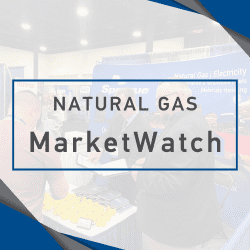Recap: Oil prices turned lower on Friday, as lockdowns in China fueled demand concerns due to coronavirus lockdowns. Demand woes tempered the rally driven by strong Chinese oil imports, the roll out of vaccines and U.S. plans for a large stimulus package. Strength in the U.S. dollar also added pressure on oil markets. February WTI fell $1.21, or 2.3%, to settle at $52.36 a barrel. After reaching their highest level in nearly a year earlier in the week, WTI squeezed a 0.2% gain on the week. March Brent, lost $1.32, or 2.3%, at $55.10 a barrel, for a 1.6% weekly fall. February RBOB lost 1.6% to $1.5284 a gallon, with prices 0.9% lower on the week, while February heating oil slipped 1.6% to $1.5929 a gallon, for a weekly rise of nearly 0.9%.
Technical Analysis: Producers are trying to work through the process of balancing supply and demand, while adding more active rigs this week. At the same time, coronavirus lead lockdowns are working to keep demand under pressure. In the background, are vaccine rollouts, economic stimulus packages, healthy equity markets and a weak U.S. dollar, amid record imports from China. In the short-term, a sustained move below $53.00 will indicate selling pressure, with the possibility of this market working toward $51.90. If March WTI can get back above $53, we will most likely see buyers enter the market, with a push toward $53.95.
Fundamental News: IIR Energy said U.S. oil refiners are expected to shut in 3.9 million bpd of capacity in the week ending January 15th, cutting available refining capacity by 73,000 bpd from the previous week. Offline capacity is expected to fall to 3.7 million bpd in the week ending January 22nd and fall further to 3.5 million bpd in the subsequent week.
The U.S. Environmental Protection Agency is seeking comment on Friday on a potential general waiver that would exempt oil refiners from their biofuel blending obligations. The move could open the door to a contentious debate between the oil and biofuel industries, just as President Donald Trump leaves office. The EPA is also expected to propose a rule on labeling and infrastructure for gasoline with higher ethanol blends.
North Dakota’s Industrial Commission said that oil production in North Dakota fell by 7,000 bpd to 1.225 million bpd in November.
U.S. shale producers are taking advantage of the oil market's rally to levels not seen in nearly a year by locking in prices for future sales. The rally has sparked optimism among shale companies, but after a year of pandemic-induced demand destruction, they are not ready to increase production. Instead, they are using futures markets to lock in higher sale prices. Producers' short positions in U.S. crude futures and options, an indication of hedging activity, have been increasing since autumn. They hit a five-month high in mid-December, according to the U.S. Commodity Futures Trading Commission. Tom Petrie, chairman at energy investment bank Petrie Partners said producers that are hedging are likely locking in about 15% to 20% of production at a time. Some companies are holding off because they anticipate prices to rise further, perhaps to $60 or $65.
U.S. energy firms this week added oil and natural gas rigs for an eighth consecutive week. Baker Hughes reported that the oil and gas rig count increased by 13 to 373 in the week ending January 15th, its highest level since May. The U.S. oil rigs increased by 12 to 287 this week, while gas rigs increased by 1 to 85.
Early Market Call – as of 8:20 AM EDT
WTI – Feb $52.29, down 7 cents
RBOB – Feb $1.5210, down 74 points
HO – Feb $1.5890, down 39 points
View the Sprague Refined Products Market Watch Report in a downloadable pdf format by clicking below.
Click to view more online:
Heating Oil Supplier
Diesel Supplier
View market updates
View our refined products glossary
Go to SpraguePORT online










